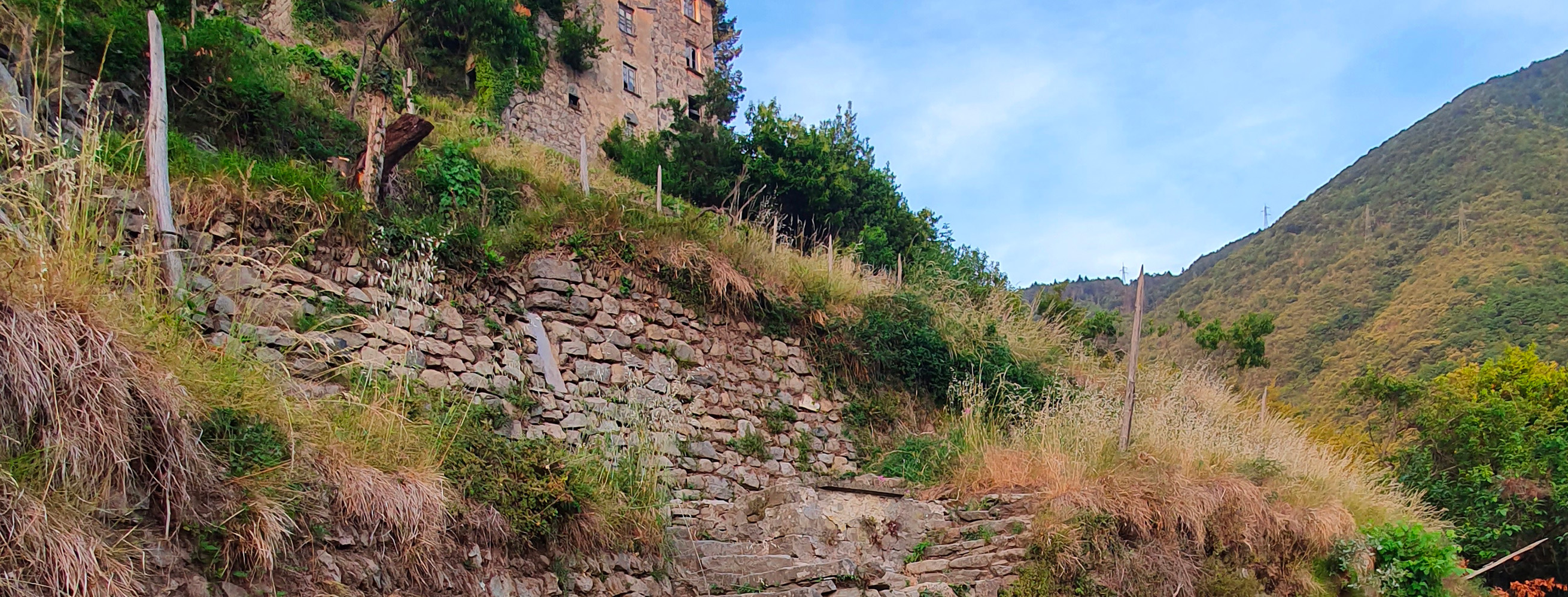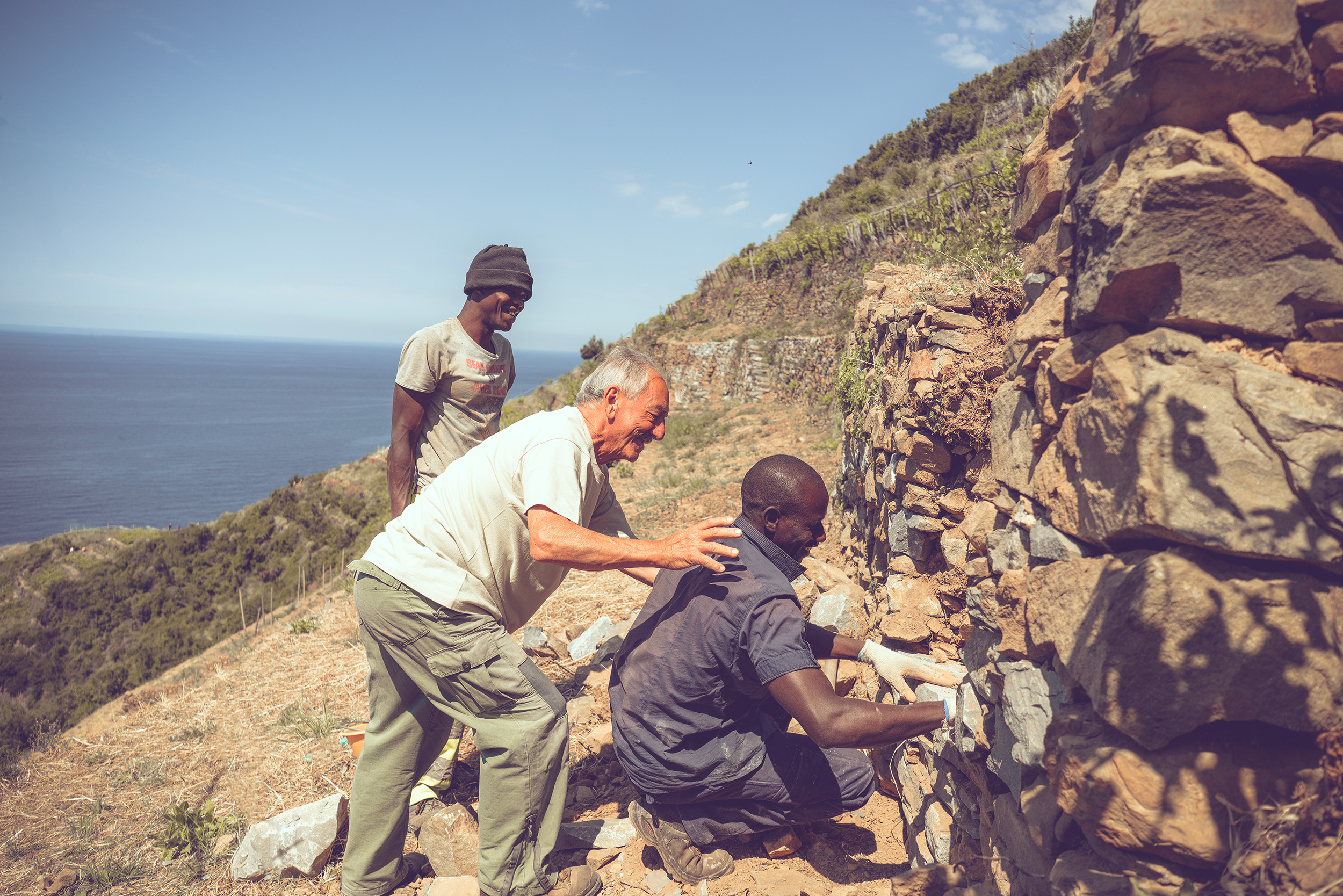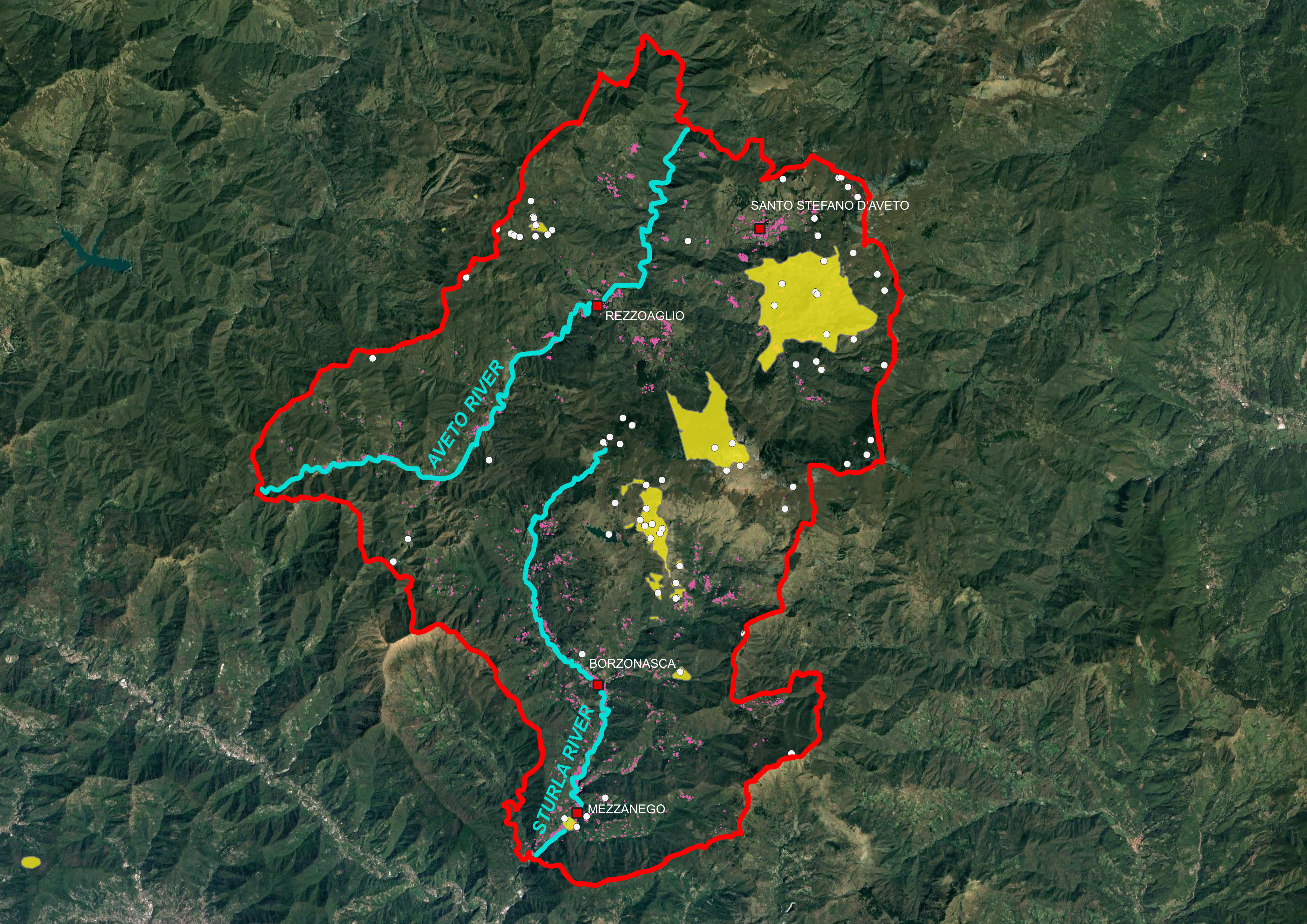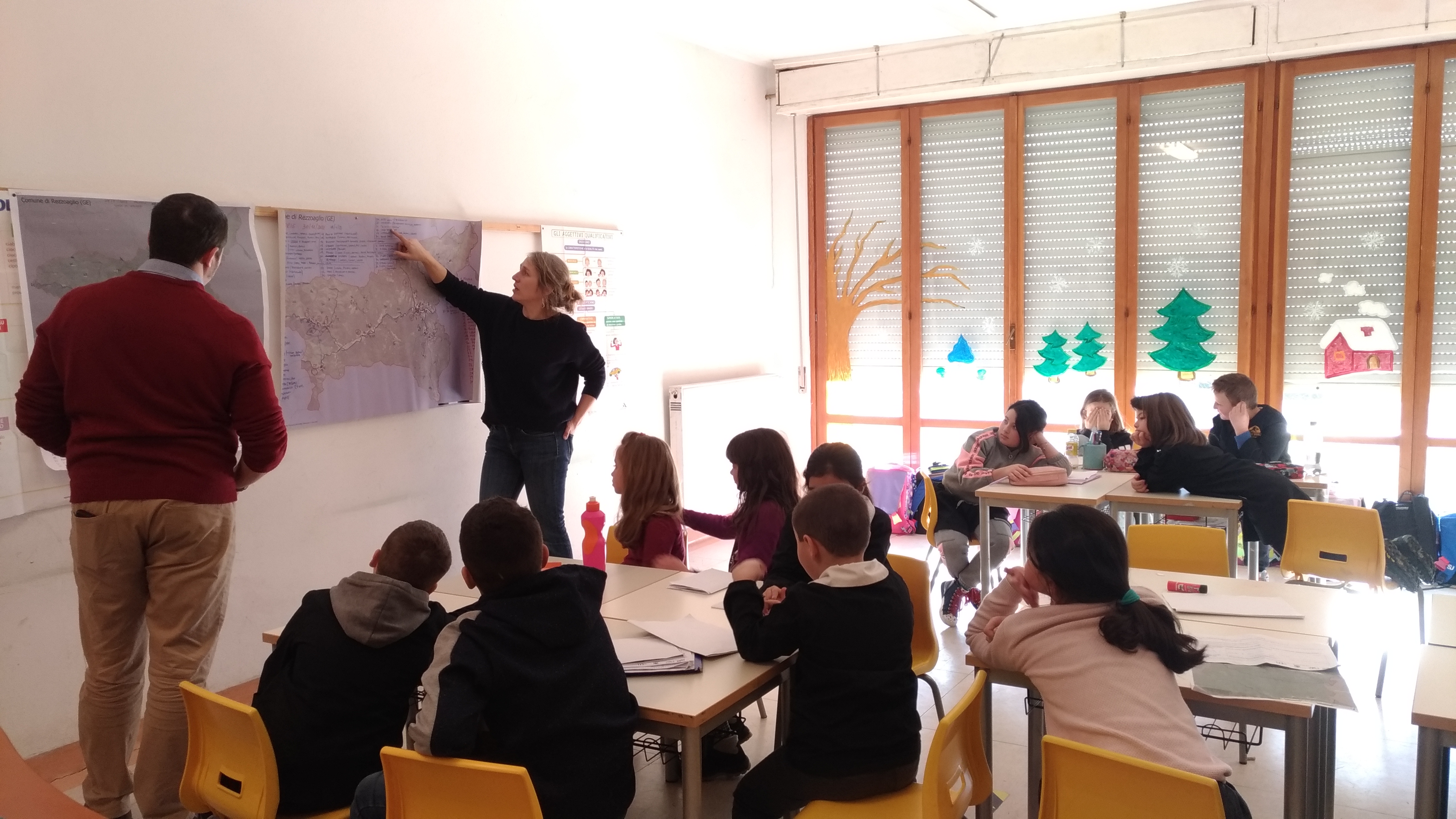
VIRTUAL EXHIBITION
PATHWAYS

Title: Mountain routes; Year: 2023; Place: Castagnello (Borzonasca) (Italy); Author & Copyright: Caterina Piu
In Liguria, a region in north-west Italy, the Apennines mountain chain is crossed by streams flowing to the Mediterranean Sea that carve sheer valleys into the hillside.

Title: Liguria and study areas; Year: 2023; Place: Liguria (Italy); Author & Copyright: Alessandro Panetta

Title: Clouds; Year: 2023; Place: Valle Erro (Italy); Author & Copyright: Sebastiano Salvidio
Over recent decades, however, this harsh and fascinating landscape has been suffering from intense depopulation and aging communities, which leads to the inevitable abandonment of rural practices, and a loss of knowledge and memory – a priceless heritage for the benefits it delivers to nature and society, and one that requires help to protect.
TERRACES

Title: Terraces and dry stone walls; Year: 2023; Place: Castagnello (Borzonasca) (Italy); Author & Copyright: Caterina Piu
The first element that strikes you when entering Ligurian valleys are terraces as far as the eye can see. Due to the steep morphology of the landscape, local communities all over the region increased the availability of cultivated arable surfaces by constructing soil terraces supported by dry stone walls.
The terraces are a tangible example of how an agro-silvo-pastoral system can literally shape large hinterlands, beyond constituting the very base of the socio-economic structure of the local communities inhabiting them. A sustainable balance that sprouts from local practices on pastures, woods and agricultural terraces year after year.

Title: Building a dry stone wall; Year: 2018; Place: Parco Nazionale Cinque Terre (Italy); Author & Copyright: Michael Pasini, Archivio Foto Parco Nazionale Cinque Terre
In fact, from the coastland to the uplands, the fertility of the terraces depended until the end of the 19th century on transhumance: historically, pastures were not limited to the highlands and the herds used to graze in ploughed, terraced lands and woods.
It is only in recent times that terraces – especially in the areas closer to the coast – have been more generally used for the cultivation of olives, grapes and chestnuts.
MEMORIES

Title: Grapes; Year: 2016; Place: Parco Nazionale Cinque Terre (Italy); Author & Copyright: Michael Pasini, Archivio Foto Parco Nazionale Cinque Terre
These traces comprise archaeological finds (such as prehistoric flint tools), historical documents (such as deeds of possession of the woods), archaeobotanical sources and the landscape itself, with its morphology, its vegetation and its infrastructure.

Title: Geography and history of a territory; Year: 2023; Place: Val d’Aveto e Valle Stura (Italy); Author & Copyright: Alessandro Panetta

Title: A good harvest; Year: 2016; Place: Parco Nazionale Cinque Terre (Italy); Author & Copyright: Michael Pasini, Archivio Foto Parco Nazionale Cinque Terre
For example, local place names, orally transmitted through the generations and lost in official cartography, are the living memory of past land management and a more populated rural landscape.
AWARENESS

Title: Partecipatory mapping; Year: 2023; Place: Rovegno (Italy); Author & Copyright: Caterina Piu

Title: Awareness; Year: 2023; Place: Rezzoaglio (Italy); Author & Copyright: Sabina Ghislandi
These activities encouraged collective reflection on the values associated with tangible and intangible rural heritage and are helping to recuperate and reinforce connections between local communities and the unique territory they live in and with.
